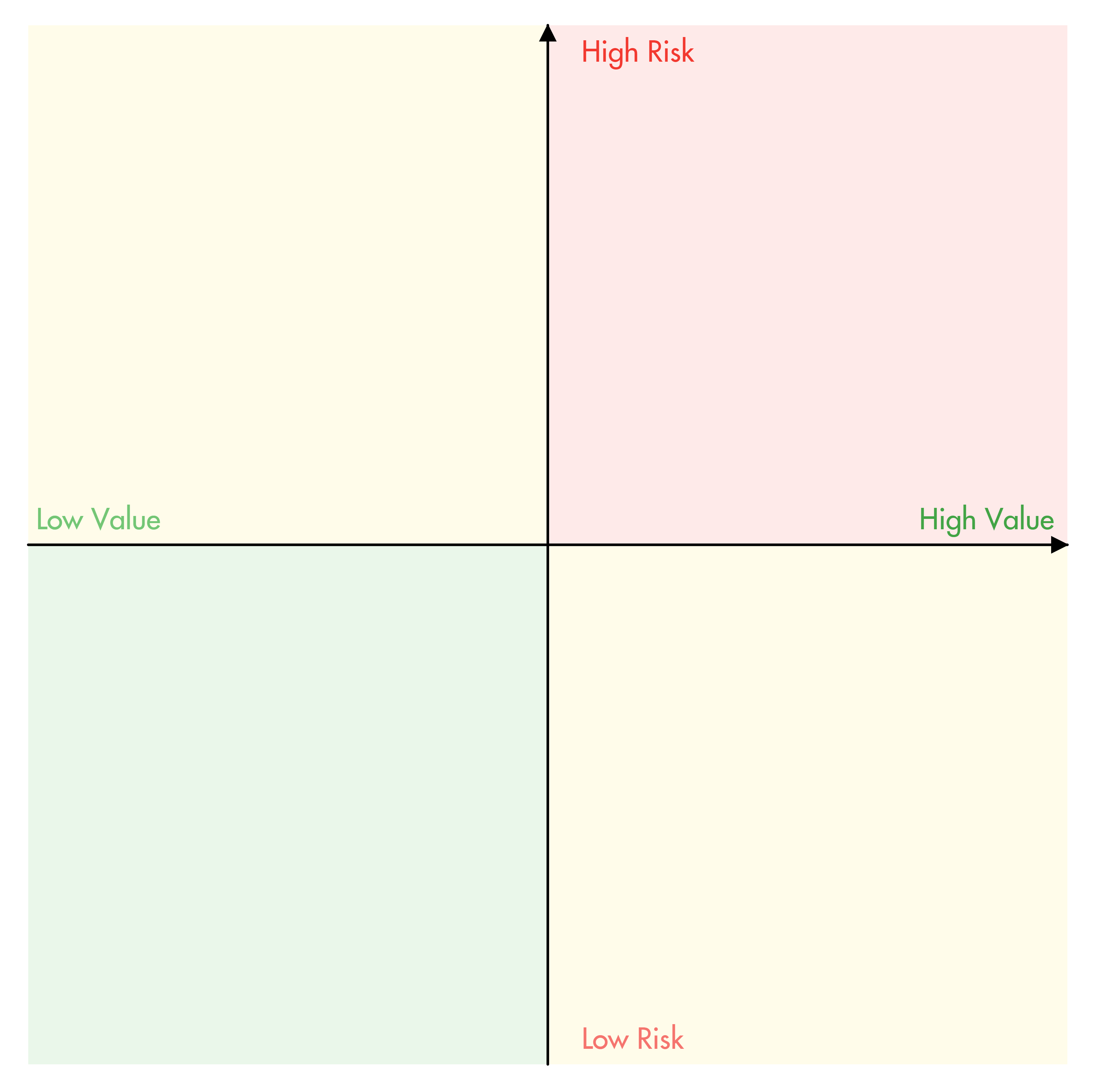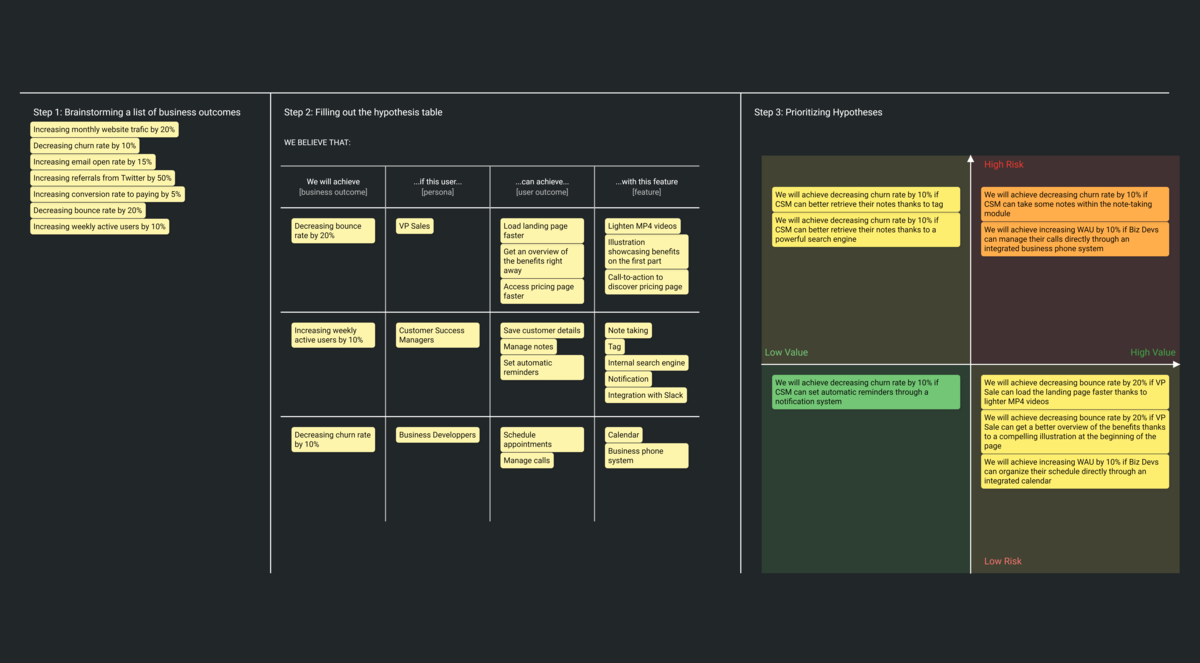How to define and prioritize the right features to implement?
When in charge of a product strategy in an uncertain environment, the main challenge lies in finding out what are the most valuable features to implement at a given time. To do so successfully, Lean UX’s authors Jeff Gothelf and Josh Seiden suggest an exercise to define and prioritize product features according to business outcomes.
Product features should enable certain personas to achieve user outcomes, which at the end of the day contribute to achieving meaningful results for your organization. This exercise forces the development teams and stakeholders to document goals and hypotheses that lead to deciding which features to implement.
Beforehand, business outcomes should have been established and highlighted in a Strategic Roadmap, and the Personas created and documented in a dedicated document.
How to run the exercise?
Once the first three columns of the table have been filled in according to your Strategic Roadmap and the Personas your product or service address, the development team can brainstorm features that may help users achieve their desired outcomes. Each team member should at least suggest one feature.

The hypothesis table
Then, the team has to relate each feature to one or several user outcomes. You may have to reorganize the first three columns to better visualize the relationships between proposed features and underlying goals and hypotheses. At the end of this stage of this exercise, you should have a backlog with justified features.
How to prioritize the hypotheses?
Stating assumptions should now help you identify project risks and prioritize features according to their value/assumption risk ratio. The authors suggest using a Risk Prioritization Matrix to place features according to two axes:
- The value you believe the feature will generate,
- The risks involved if the underlying assumptions were wrong.

The higher the risk and the more anticipated value involved, the higher the priority is to test those hypotheses first. Because if those hypotheses are wrong or partly wrong, this could have dire consequences for your project.
